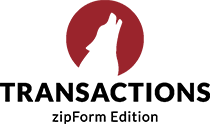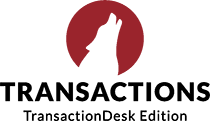
One of the biggest challenges facing brokers today is pressure on their net profit margins, according to Real Trends’ Q4 Broker Sentiment Survey.
Understandably so. Real estate has changed so much in the past 10 years that new components, such as digital technology, are now part and parcel of working in the industry.
For example, in today’s real estate industry, you can’t submit an offer without a form, and you can’t fill out a form without software. You can’t submit a deal without a signature, and you can’t get a signature without an eSignature tool. You can’t run a brokerage if you don’t pay the agents and recover your split, and you can’t do that without back office and accounting software. (Okay, you could technically do each of these things by hand, but that’d be about as productive as plowing a field with a pitchfork.)
Here’s the point. Because of wide-scale changes to the industry, every brokerage’s top line now has a host of primarily permanent costs, while the bottom line’s growth potential is largely determined by traditional factors, many of which are external and out of a brokerage’s control.
So the question brokers are asking themselves, then, is this. How much can they actually increase their profit margins when their costs are not only permanent, but ever rising? Is their profitability tied irrevocably to the market? To their agent count?
How profitable can a broker really be?
Profitability is a challenge facing the entire industry.
While real estate technology emboldens agents and brokerages to focus on their revenue-generating activities and helps them make more money, the proliferation of so much real estate technology ultimately diverges essential information out of a single location and into many. This divergence or siloization or fragmentation of information—whatever you want to call it—makes it nearly impossible to find, identify, and affect factors that will directly increase a brokerage’s profits.
Making sense of profitability shouldn’t feel like you’re counting stars in the sky. But it invariably does, especially when:
- You don’t have the means to compile all the data that flows into your brokerage
- The data you do have is gated behind overburdened administrators
- You are not particularly data-savvy or literate
- You don’t have a crystal-clear view of the full expense structure of your company
- You can’t easily identify high- and low-performing agents
- You don’t know how your office(s) performs over time in terms of sales, GCI, and company dollar
But picture this for a second: What if you could consolidate your brokerage’s data into a single platform? What if that platform could make sense of the data for you? Show you how much money your business is spending versus how much it’s bringing in? Give everyone in your brokerage real, accurate, and easy-to-understand information with which you could all take thoughtful, concrete, and deliberate action?
Getting all of your data into this one platform wouldn’t increase your profit margins—no, not on its own. But it would give you actionable insights through which you could increase your profit margins.
And then you’d find profitability in the likeliest of places: Your hands.
Sign up below to be first to hear more about brokerage profitability and actionable insights.


